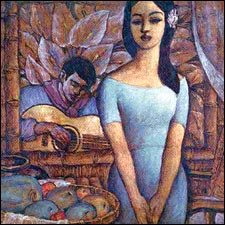



| What is Harana? by Florante Aguilar and Fides Enriquez |
||||
In this endeavor, the most trusted instrument was the guitar. Its intimate sound complemented the sweetness of Spanish-influenced songs combined with the poetry and lyricism of the Tagalog language as it wafted through the breezy, tropical night. For a young man in colonial Philippines, it was certainly advantageous to possess musical abilities as it was often useful in courting a Filipina woman. However, all is not lost if he lacks the singing ability. It was common practice to enlist friends as well as the best musicians and singer or haranista in town. Thus, harana was not always a solitary endeavor. In fact, it was considered a social event. Harana was an exclusively nocturnal practice. Due to the daytime tropical weather, the evening offers respite from the heat, a time when everybody comes alive, full of romantic ideas, and as is typical of Filipino nature, always ready to enjoy the company of friends and loved ones. It was during this old Philippines, before the widespread use of electricity, that harana was at its ripest.
To find out more about harana, please go to Florante's blog to read topics on: |
|
|||
 Harana was a traditional form of courtship in the Philippines wherein men introduced themselves and/or wooed women by singing underneath her window at night. It was widely practiced in old Philippines with a set of protocols, a code of conduct and a specific style of music.
Harana was a traditional form of courtship in the Philippines wherein men introduced themselves and/or wooed women by singing underneath her window at night. It was widely practiced in old Philippines with a set of protocols, a code of conduct and a specific style of music.